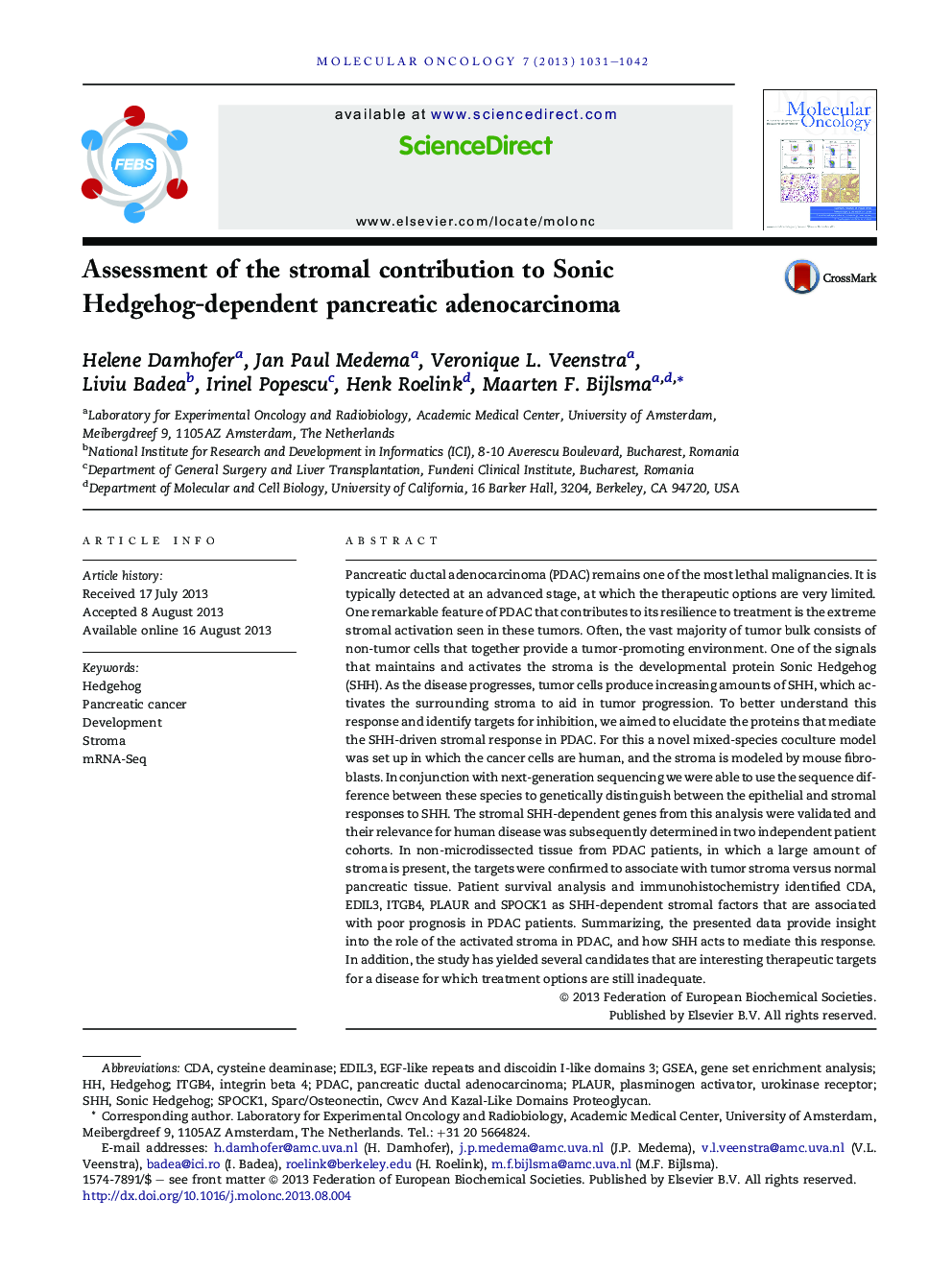| Article ID | Journal | Published Year | Pages | File Type |
|---|---|---|---|---|
| 2145615 | Molecular Oncology | 2013 | 12 Pages |
•Hedgehog target genes in the stroma of pancreatic carcinoma remain largely elusive.•A novel mixed-species setup to study tumor-stroma interactions was developed.•This setup identified several thousands of Hedgehog target genes in tumor stroma.•Targets were selected by ontology and extensively validated by conventional methods.•Validated targets were shown to be predictive for outcome in a cohort of patients.
Pancreatic ductal adenocarcinoma (PDAC) remains one of the most lethal malignancies. It is typically detected at an advanced stage, at which the therapeutic options are very limited. One remarkable feature of PDAC that contributes to its resilience to treatment is the extreme stromal activation seen in these tumors. Often, the vast majority of tumor bulk consists of non-tumor cells that together provide a tumor-promoting environment. One of the signals that maintains and activates the stroma is the developmental protein Sonic Hedgehog (SHH). As the disease progresses, tumor cells produce increasing amounts of SHH, which activates the surrounding stroma to aid in tumor progression. To better understand this response and identify targets for inhibition, we aimed to elucidate the proteins that mediate the SHH-driven stromal response in PDAC. For this a novel mixed-species coculture model was set up in which the cancer cells are human, and the stroma is modeled by mouse fibroblasts. In conjunction with next-generation sequencing we were able to use the sequence difference between these species to genetically distinguish between the epithelial and stromal responses to SHH. The stromal SHH-dependent genes from this analysis were validated and their relevance for human disease was subsequently determined in two independent patient cohorts. In non-microdissected tissue from PDAC patients, in which a large amount of stroma is present, the targets were confirmed to associate with tumor stroma versus normal pancreatic tissue. Patient survival analysis and immunohistochemistry identified CDA, EDIL3, ITGB4, PLAUR and SPOCK1 as SHH-dependent stromal factors that are associated with poor prognosis in PDAC patients. Summarizing, the presented data provide insight into the role of the activated stroma in PDAC, and how SHH acts to mediate this response. In addition, the study has yielded several candidates that are interesting therapeutic targets for a disease for which treatment options are still inadequate.
